13 Well-Known Examples of Keystone Species and Their Role in The Ecosystem
Certain species have the ability to shape and sustain entire ecosystems in nature’s sophisticated canvas. These keystone species have a far-reaching impact that goes far beyond their individual numbers or biomass.
Join us as we make the journey through various habitats, from forests to oceans, to learn about the remarkable stories of these ecological engineers.
In this exploration, we’ll look at the critical roles that these keystone species play in maintaining nature’s delicate balance, as well as how their actions flow through food webs, trophic levels, and the very cycle of life itself.
Let’s dive in and discover the secrets of these crucially important players in nature’s grand symphony.
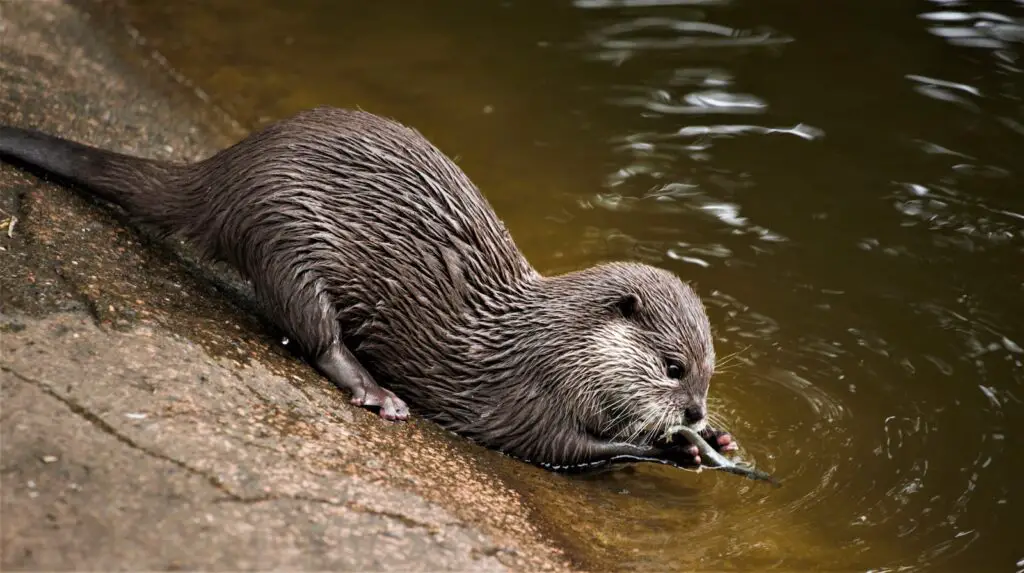
1. Sea Otters (Enhydra lutris)
Sea otters (Enhydra lutris) are well-known examples of keystone species in marine ecosystems, particularly in kelp forest habitats. Their presence and activities have a significant impact on the structure and dynamics of these ecosystems. The following is how sea otters function as a keystone species:
- Regulation of Sea Urchin Population: Sea otters prey on sea urchins, a common herbivore in kelp forest ecosystems. Without sea otters, sea urchin populations can explode, resulting in kelp overgrazing. Because kelp serves as a primary habitat and food source for many other species, overgrazing can have a domino effect on the entire ecosystem.
- Kelp Forest Maintenance: Sea otters indirectly help to maintain healthy kelp forests by controlling sea urchin populations. Kelp forests are important habitats for a wide variety of marine life, including fish, invertebrates, and other species.
- Biodiversity Promotion: Healthy kelp forests create a complex habitat with many niches for various species to occupy. This promotes biodiversity by providing suitable conditions for feeding, shelter, and reproduction for a variety of organisms within the kelp ecosystem.
- Balancing Trophic Levels: Top-down control of the food web is exercised by sea otters. Their predation on sea urchins keeps them from overgrazing, allowing kelp to thrive. After that, healthy kelp forests provide habitat and food for a variety of organisms further down the food chain.
- Altering Prey Behaviour: Sea otters also have an impact on the behaviour of their prey, especially sea urchins. Sea urchins hide in crevices during the day to avoid predation in areas where sea otters are present, reducing their impact on kelp. This behavioural change contributes to the health of the kelp forest.
- Complex Interactions: The interactions of sea otters, sea urchins, kelp, and other species demonstrate how complex and interconnected ecosystems are. The removal or reintroduction of sea otters can have far-reaching consequences for the entire food web, altering the ecosystem’s balance and structure.
In summary, sea otters are a keystone species because their predation on sea urchins has cascading effects on the entire kelp forest ecosystem. Their presence maintains the balance between different species, promotes biodiversity, and helps ensure the health and resilience of the marine ecosystem.

2. Wolves (Canis lupus)
Wolves (Canis lupus) are a prime example of a keystone species, especially in terrestrial ecosystems such as forests and grasslands. Their presence and behaviour have the potential to have a significant impact on the structure and dynamics of these ecosystems. The following is how wolves function as keystone species:
- Troop Regulation: Wolves are the top predators in their ecosystems, also known as apex predators. As a result, they aid in the control of herbivore populations such as deer and elk. Wolf populations are kept in check, preventing overgrazing of vegetation. This has a knock-on effect on plant communities, allowing vegetation to recover and stay healthy.
- Ecosystem Balance: When wolves hunt herbivores, they put pressure on their populations. This “top-down” regulation helps to keep herbivore populations in check, which could have a negative impact on vegetation and other species that rely on those plants.
- Habitat Alteration: Wolves shape the landscape indirectly because they influence the behaviour and distribution of herbivores. Herbivores, for example, may avoid areas where they feel vulnerable to predation when wolves are present. This can cause changes in plant composition as well as changes in the physical structure of the environment.
- Cascading Effects: The effects of wolves on herbivore populations can have a wide-ranging impact on the ecosystem. Reduced herbivore pressure can increase plant diversity, providing habitat and food for other animals. Smaller predators, scavengers, and even songbirds that benefit from healthier plant communities can experience these effects.
- Scavenger Benefits: After feeding, wolves leave behind carcasses that provide an important food source for scavengers such as ravens, eagles, and smaller carnivores. These scavengers play important roles in the ecosystem and can benefit from wolf-killed prey.
- Spatial Dynamics: The mere presence of wolves can influence herbivore movement and behaviour. This can help to reduce overbrowsing in certain areas while also encouraging more natural patterns of habitat use.
- Natural Selection: Wolves often target weaker, sick, or older prey animals. This natural selection can contribute to the long-term stability of ecosystems by improving the overall health and genetic quality of herbivore populations.
In essence, the presence of wolves as apex predators can trigger a complex web of ecological interactions that shape the structure and function of their ecosystems. This influence on multiple levels of the food chain is why wolves are considered a keystone species.
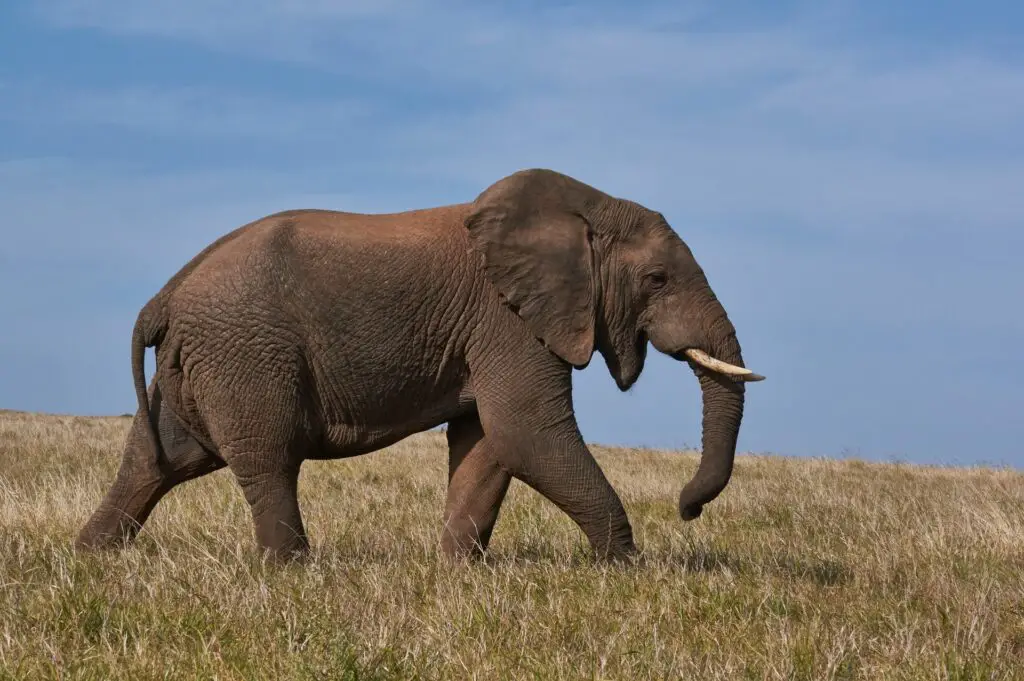
3. Elephants (Loxodonta spp.)
Elephants are considered keystone species in certain ecosystems, particularly in African and Asian savannas and forests. Their significance as keystone species stems from their large environmental impact and ability to shape the landscape in ways that influence other species and ecosystem processes. Elephants can serve as keystone species in the following ways:
- Habitat Modification: Elephants are well-known for their feeding habits, which frequently include stripping leaves, breaking branches, and uprooting small trees. This behaviour results in open spaces in the landscape, which are referred to as “elephant lawns.” These open areas provide habitat for grasses and other plants that other herbivores prefer. Thus, elephants indirectly influence the distribution and abundance of plant species, as well as the diversity of habitats.
- Seed Dispersal: Elephants eat a wide variety of plant species, and their dung contains seeds from those plants. These seeds are spread across the landscape as they move around and defecate. This increases the potential for plant regeneration and aids in the preservation of plant diversity.
- Water Hole Creation: During dry spells, elephants have a habit of digging for water. Their excavation may result in the formation of water holes or depressions that collect rainwater. During times of scarcity, these water holes become important sources of water for a variety of other animals.
- Maintaining Grasslands: Elephants help prevent the overgrowth of certain plant species in some ecosystems by feeding on them. This can help maintain the balance between grasses and woody vegetation, which affects the plant community composition.
- Tree Control: Elephants can help control the spread of certain fast-growing trees by browsing on them, preventing them from dominating the landscape and maintaining a more balanced forest composition.
- Nutrient Cycling: Elephants contribute to nutrient cycling by consuming plants and releasing nutrients back into the environment via their dung. This can improve the soil and help other plant species.
While elephants can have a positive impact on ecosystem dynamics, it is important to note that their large populations can also have a negative impact, particularly in areas with high human-elephant conflict due to habitat loss and resource competition. Balancing elephant conservation needs with local community needs is a significant challenge in areas where elephants are considered keystone species.
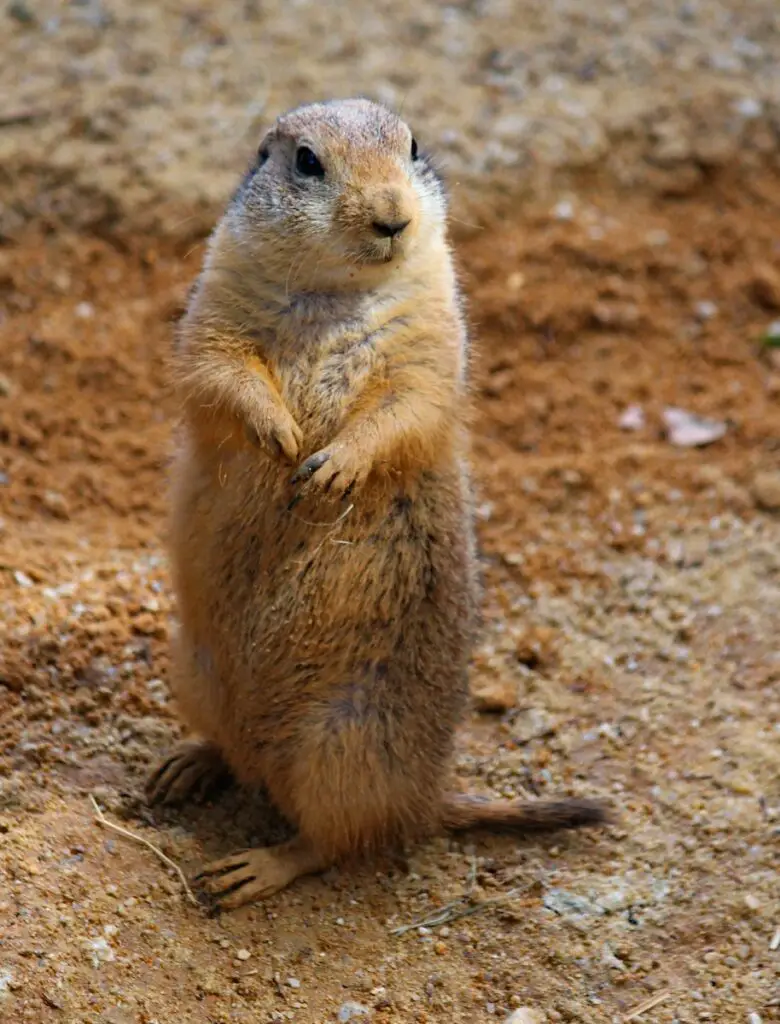
4. Prairie Dogs (Cynomys spp.)
Prairie dogs are indeed important species in grassland ecosystems. Despite their small size, they have a significant impact on the structure and functioning of their habitat. Prairie dogs serve as keystone species in the following ways:
- Habitat Engineering: Prairie dogs are prolific diggers who dig extensive burrow systems for themselves and many other species. Insects, reptiles, small mammals, and even birds like burrowing owls live in these burrows. Burrows also provide predator protection, which benefits a diverse community of animals.
- Plant Diversity and Grazing: Prairie dogs influence the composition and structure of the plant community by selectively grazing on grasses and other vegetation. Their grazing patterns produce a mosaic of short and tall grass areas, promoting plant diversity. Changes in vegetation have an impact on other herbivores, predators, and even soil processes.
- Predator Prey Dynamics: Prairie dogs are an important food source for many predators, including raptors, carnivores such as coyotes, and even some snakes. Their population size and distribution have an impact on predator populations and behaviours, which can have a knock-on effect on other parts of the ecosystem.
- Ecosystem Engineering: Prairie dogs’ digging activities aerate the soil, improve water infiltration, and influence nutrient cycling. Changes in soil composition can result, affecting plant growth and overall ecosystem productivity.
- Fire Regulation: Prairie dog colonies, in some cases, create firebreaks by reducing the amount of dry grass that could fuel wildfires. This aids in fire regulation and the prevention of large-scale wildfires.
The impact of removing prairie dogs from their grassland ecosystems would be significant. Their burrows provide homes and protection for a variety of species, their grazing patterns influence plant communities, interactions with predators and prey shape population dynamics, and ecosystem engineering influences soil and nutrient processes. All of these factors emphasize the prairie dog’s importance as a keystone species in the health and balance of grassland ecosystems.
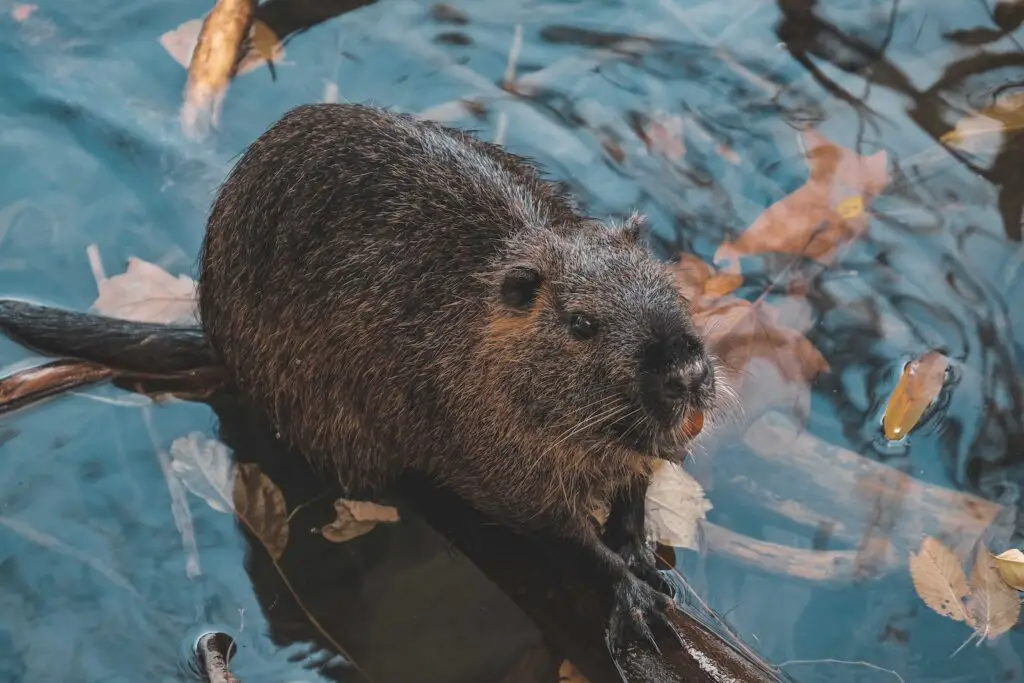
5. Beavers (Castor spp.)
Beavers (Castor spp.) are often considered a keystone species in certain freshwater ecosystems, particularly in North America, due to the significant impact they have on shaping their surroundings and influencing ecological dynamics. Here’s how beavers function as keystone species:
- Habitat Creation: Beavers are well-known for damming streams and rivers with sticks, mud, and stones. These dams create ponds and wetlands, which are vital habitats for a wide range of plants and animals, including waterfowl, amphibians, fish, and insects. These wetlands provide important food sources, breeding grounds, and shelter.
- Water Management: Beaver dams aid in the regulation of water flow within ecosystems. They reduce erosion, control flooding, and help recharge groundwater by slowing water flow. This has the potential to benefit downstream areas by lowering water levels and improving water quality.
- Nutrient Cycling: The creation of wetlands by beavers can result in increased nutrient cycling. Sediments carried by water are trapped behind dams, resulting in fertile areas where vegetation can grow. This vegetation, in turn, provides habitat and food for a variety of species.
- Diverse Landscapes: Beaver activity within an ecosystem creates a mosaic of different habitats. Their dams and wetlands can support a variety of vegetation, attracting a wide range of organisms. This diversity improves the overall resilience of the ecosystem.
- Predator-Prey Interactions: Beaver ponds can attract predators such as otters, mink, and certain bird species, which benefit from the increased food availability and shelter provided by the beaver-built habitat.
- Climate Change Resilience: Climate change can be mitigated through beaver activity. Beaver-created wetlands store carbon and provide habitat for species threatened by changing temperatures and weather patterns.
If beavers were to be removed from these ecosystems, the absence of their dam-building and habitat-creating behavior could lead to changes in water flow, decreased habitat availability, altered nutrient cycling, and reduced overall biodiversity. These changes could have cascading effects throughout the ecosystem, underscoring the keystone role that beavers play in shaping and maintaining their environment.

6. Alligators (Alligator mississippiensis)
Alligators (Alligator mississippiensis) are often considered keystone species in certain freshwater and wetland ecosystems, particularly in southeastern parts of the United States. They play a significant role in shaping and maintaining the structure and function of these ecosystems. Here’s how alligators function as keystone species:
- Habitat Creation: Alligators create and maintain vital habitat features in their surroundings. During the dry season, they dig depressions in the ground known as “alligator holes.” These holes collect water and serve as vital wetland habitats for a variety of aquatic species, particularly during droughts.
- Biodiversity Enhancement: Alligator holes are used not only by alligators but also by a variety of other organisms such as fish, amphibians, reptiles, and invertebrates. The presence of these water sources expands the range of species that can live in the area.
- Nutrient Cycling: Alligators contribute to nutrient cycling in their ecosystem. They consume a wide range of prey, including fish, turtles, and birds, and excrete waste into their surroundings. This waste adds nutrients to the water and soil, influencing plant growth and supporting other organisms in the food web.
- Predator Regulation: Alligators, as top predators, help to regulate the populations of other species in their ecosystem. They prevent overgrazing and overpopulation of certain animals by controlling the abundance of prey species, which can have a cascading effect throughout the food web.
- Shape of Waterways: Alligators have the ability to shape waterways through their movement and nesting habits. Their nesting sites can form mounds and depressions, which affect water flow and the distribution of aquatic plants, thereby influencing the overall ecosystem structure.
- Biotic Interactions: Because of their presence, alligators have an impact on the behaviour and distribution of other species. Animals that would normally avoid water may, for example, use alligator holes as safe drinking holes, altering their behaviour and resulting in new ecological interactions.
If alligators were removed from these ecosystems, it could lead to changes in habitat availability, nutrient cycling, predator-prey dynamics, and overall ecosystem health. Therefore, due to their multifaceted impact on the structure and functioning of wetland and freshwater environments, alligators are often considered keystone species in these regions.
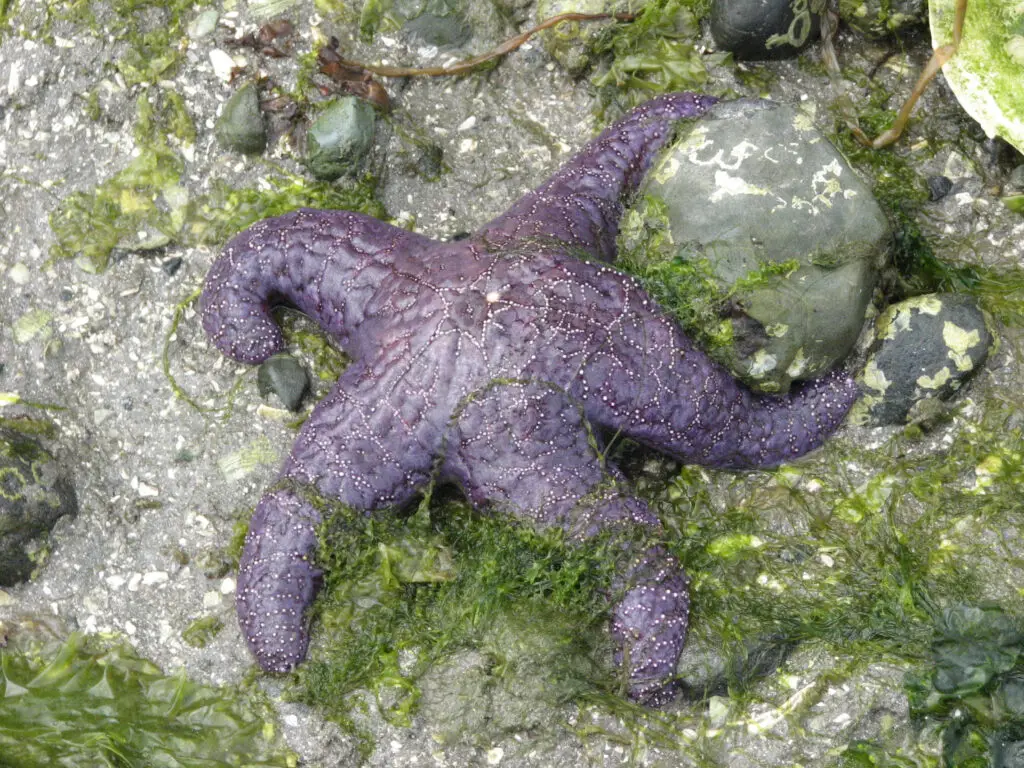
7. Sea Stars (Pisaster ochraceus)
Sea stars, particularly the species Pisaster ochraceus (commonly known as the Ochre Sea Star or Purple Sea Star), are often considered classic examples of keystone species in intertidal ecosystems along the west coast of North America. Their keystone status is largely attributed to their influence on the diversity and composition of rocky intertidal communities. Here’s how sea stars fulfill the role of a keystone species:
- Predator of Mussels: Sea stars are voracious predators of mussels, which predominate in rocky intertidal zones. Mussels can form dense aggregations that compete for space and resources with other species. Sea stars, particularly P. ochraceus, eat mussels, which keeps their populations in check and prevents them from monopolising available space.
- Cascade Effects: Sea stars suppress mussel populations, allowing other species such as barnacles, anemones, and various algae to thrive. As a result, the ecosystem becomes more diverse and balanced. If sea star populations decline or disappear, mussel populations may explode, resulting in “mussel-dominated” areas where other species struggle to survive. A trophic cascade occurs when changes in one species’ population have cascading effects throughout the ecosystem.
- Maintaining Biodiversity: Sea stars indirectly support the coexistence of various intertidal species by controlling mussel populations. This increased diversity benefits not only the other species, but also the overall stability and resilience of the ecosystem.
- Ecosystem Structure: By controlling the distribution of mussels, sea stars shape the physical structure of the intertidal zone. This has an impact on factors such as wave action, sunlight penetration, and overall habitat availability.
- Prey Preference: Sea stars prey on mussels of varying sizes, leaving larger individuals alone. This behaviour promotes mussel size balance and prevents mussels from dominating the rocky substrate.
Overall, the presence of sea stars, particularly Pisaster ochraceus, helps maintain the balance of intertidal ecosystems by controlling the abundance of dominant competitors like mussels. Their influence ripples through the food web, affecting species composition, diversity, and ecosystem functioning. This central role in shaping the structure of the intertidal community is why they are considered a keystone species in their respective habitat.
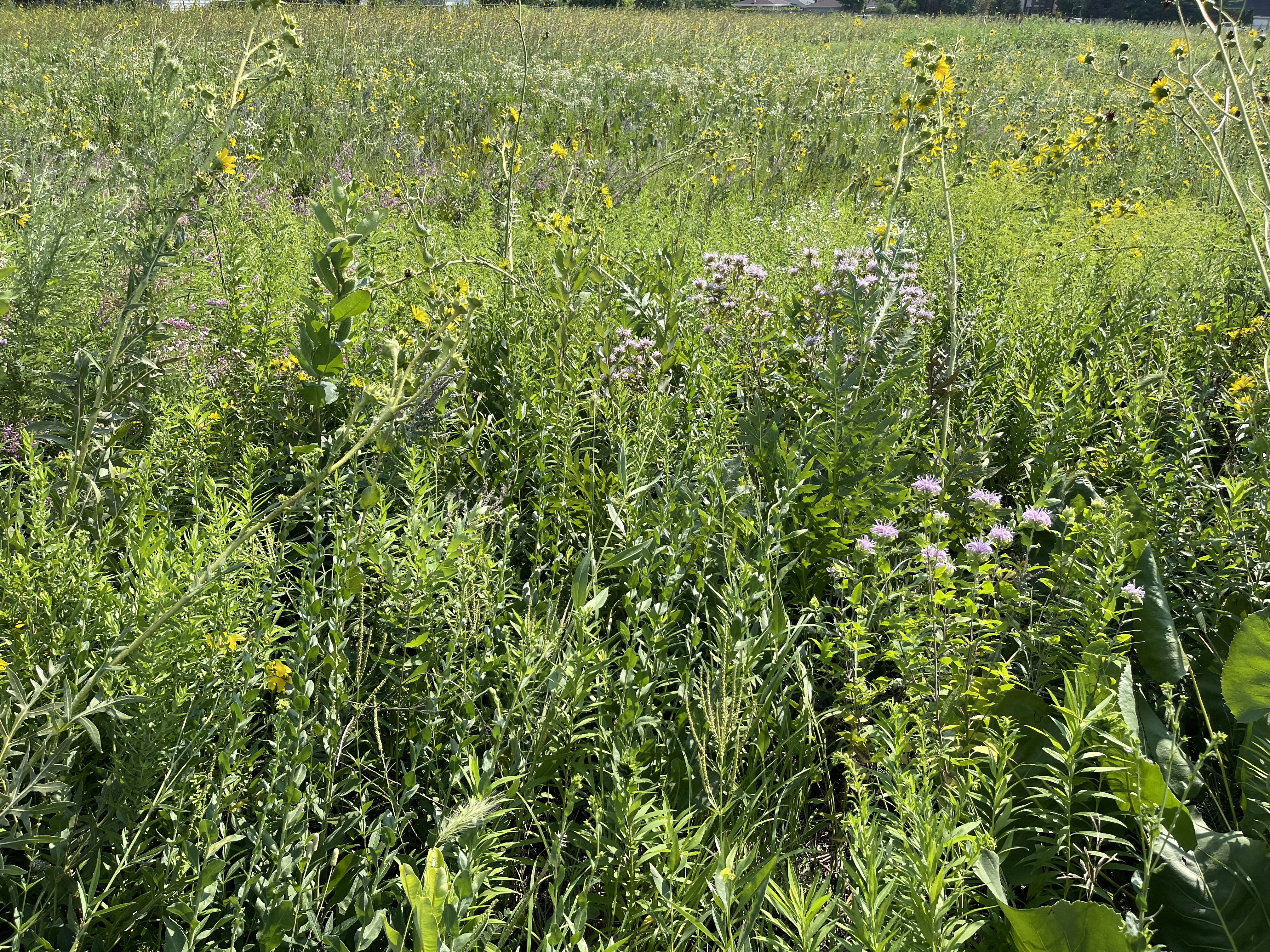
8. Prairie Grasses (Various species)
Prairie grasses, while not as commonly recognized as some other keystone species, can be considered keystone species in grassland ecosystems due to their significant impact on the structure and function of these environments. Here’s how prairie grasses fulfill the role of a keystone species:
- Ecosystem Structure: Prairie grasses are keystone species in grassland ecosystems. They cover large areas and serve as the foundation of the food web. Their root systems help to stabilise the soil and prevent erosion, which contributes to the ecosystem’s overall stability.
- Nutrient Cycling: Prairie grasses are essential for nutrient cycling. They take nutrients from the soil and release them back into the ecosystem when they die and decompose. This cycling helps other plants grow and provides essential nutrients to herbivores.
- Habitat Creation: The dense stands of prairie grasses provide habitat and shelter for a wide range of animals, including insects, birds, and mammals. Many animals use grasses to build nests, hide from predators, and find food.
- Fire Management: Some grassland ecosystems have adapted to frequent fires, and prairie grasses play a role in fire dynamics. They may be fire-resistant, allowing for controlled burns without harming the ecosystem. Fires clear out competing vegetation and promote grass growth, which aids in the maintenance of the grassland ecosystem.
- Biodiversity Promotion: Prairie grasses support a diverse range of life. Their intricate root systems, varying heights, and seed production provide habitat for a wide range of organisms. This diversity has the potential to make ecosystems more stable and resilient.
- Herbivore Support: Grasses are an important source of food for many herbivores, including insects, small mammals, and large herbivores such as bison and pronghorns. These herbivores, in turn, provide food for the predators higher up the food chain.
While prairie grasses might not have the same charismatic presence as some well-known keystone species, their influence on the functioning and biodiversity of grassland ecosystems is profound. Changes in the abundance or health of prairie grasses can lead to cascading effects throughout the ecosystem, underscoring their role as keystone species in these environments.
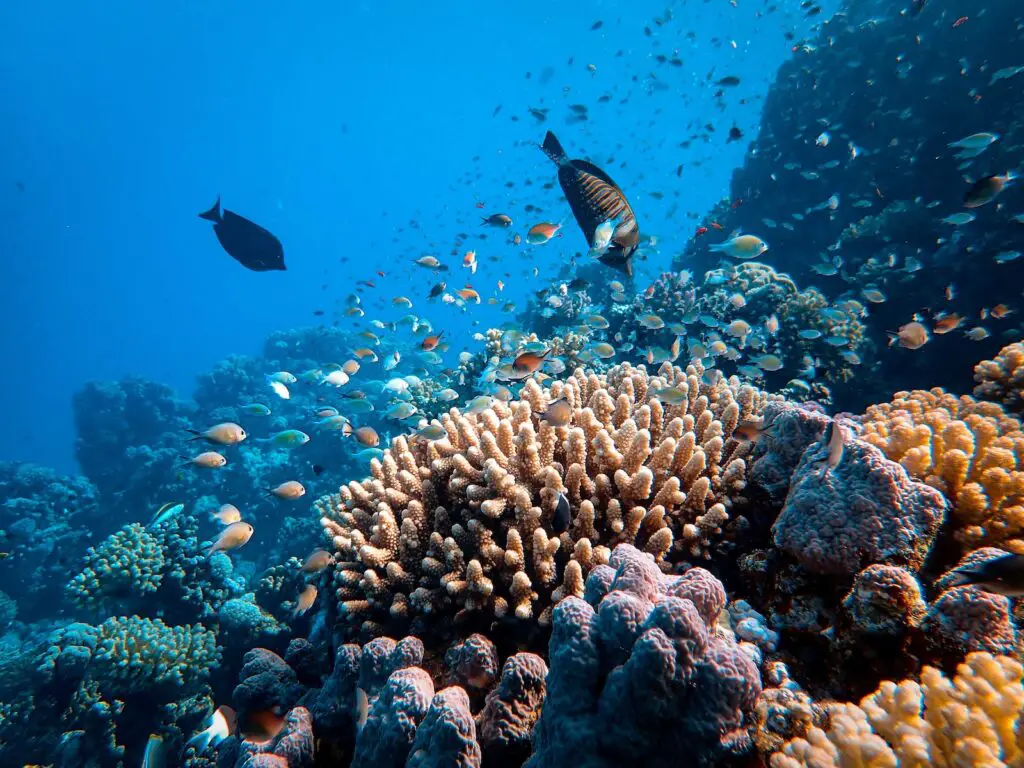
9. Corals (Various species)
Corals, especially in coral reef ecosystems, can indeed be considered keystone species due to their vital role in maintaining the health and diversity of these complex marine environments. Here’s how corals function as keystone species:
- Habitat Formation: Coral reef ecosystems are built on corals. They provide the physical structure for a diverse range of marine life. The intricate architecture of coral reefs creates crevices, hiding spots, and niches that many other species rely on for shelter and protection from predators, including fish, invertebrates, and algae.
- Biodiversity Hotspots: Coral reefs are among the most diverse ecosystems on the planet, home to a vast array of species. The presence of corals allows countless marine organisms to coexist, contributing to the high biodiversity observed in coral reef environments.
- Food Web Support: Corals are filter feeders, but they also serve as important feeding grounds for a variety of herbivorous and carnivorous organisms. These organisms form intricate food webs that revolve around the coral reef ecosystem’s productivity and structure.
- Carbon and Nutrient Cycling: Coral reefs play an important role in the cycling of nutrients and the maintenance of carbon balance in marine environments. Interactions between corals, algae, and other organisms help to recycle nutrients and regulate carbon dioxide levels in the ocean.
- Coastal Protection: Coral reefs, like oyster reefs, protect coastlines by acting as natural barriers against wave energy and storm surges. They lessen the impact of storms on coastal areas, preventing erosion and protecting nearby human communities.
- Tourism and Economies: Coral reefs are popular tourist destinations that contribute significantly to the economies of many regions. Their beauty and ecological value attract visitors, and tourism revenue supports local economies and communities.
If coral reefs were to decline significantly or disappear due to factors such as coral bleaching (often caused by climate change), pollution, or destructive human activities, it would lead to the unraveling of these complex ecosystems. The loss of corals could disrupt the delicate balance of the food web, reduce biodiversity, and impact the many species that rely on coral reefs for survival. Therefore, corals are considered keystone species due to their foundational role in shaping and maintaining the entire coral reef ecosystem.

10. Bison (Bison bison)
The American bison (Bison bison) stands out as a keystone species among the key players. These majestic creatures have a significant impact on their environment, shaping landscapes and fostering biodiversity in ways that make them an important component of North American ecosystems. Here’s how bison play a critical role as a keystone species:
- Ecosystem Engineer: Because of their distinct behaviours that shape the landscape, bison are referred to as “ecosystem engineers.” Their grazing habits regulate grass and other vegetation growth, preventing any one plant species from dominating. This promotes plant diversity and the growth of a variety of plants that provide food and habitat for other species.
- Grassland Management: Bison grazing patterns contribute to the health of grasslands. They graze selectively, preferring certain grass species over others. This prevents the overgrowth of certain grasses, which can be detrimental to plant diversity. Bison indirectly support numerous species that rely on these grasslands by promoting diverse grass growth.
- Seed Dispersal: Bison inadvertently disperse seeds through their fur and digestive systems as they move through their habitats. This promotes plant reproduction and increases overall ecosystem diversity by allowing new plants to establish in a variety of locations.
- Fire Regulator: Bison have historically been associated with fire-regulated ecosystems. Their grazing patterns create “grazing lawns” with shorter grass patches, which can help to keep wildfires from spreading. This keeps grasslands as a dynamic mosaic of different growth stages and reduces the risk of catastrophic fires.
- Habitat Creation: Wallowing, rolling, and rubbing against trees and rocks causes depressions in the landscape, resulting in small pools of water. During dry periods, these wallows provide critical water sources for a variety of species. In addition, they create microhabitats for amphibians and insects.
- Predator-Prey Relationships: Bison herds provide food sources for predators such as wolves and bears. Bison carcasses that die naturally become a valuable food source for these predators, sustaining their populations and maintaining a healthy predator-prey dynamic.
- Dung Beetle Interaction: Bison dung is essential for promoting nutrient cycling. Dung beetles decompose bison droppings quickly, recycling nutrients and improving soil health. Plants and the entire ecosystem benefit from this efficient recycling process.
The importance of the American bison as a keystone species extends beyond its size and stature. The bison significantly shapes and improves the ecosystems in which it lives by acting as an ecosystem engineer, grassland manager, seed disperser, fire regulator, habitat creator, and facilitator of predator-prey relationships. It is critical to preserve and protect these keystone species in order to maintain the delicate balance of North American ecosystems and ensure the survival of countless other species that rely on them.
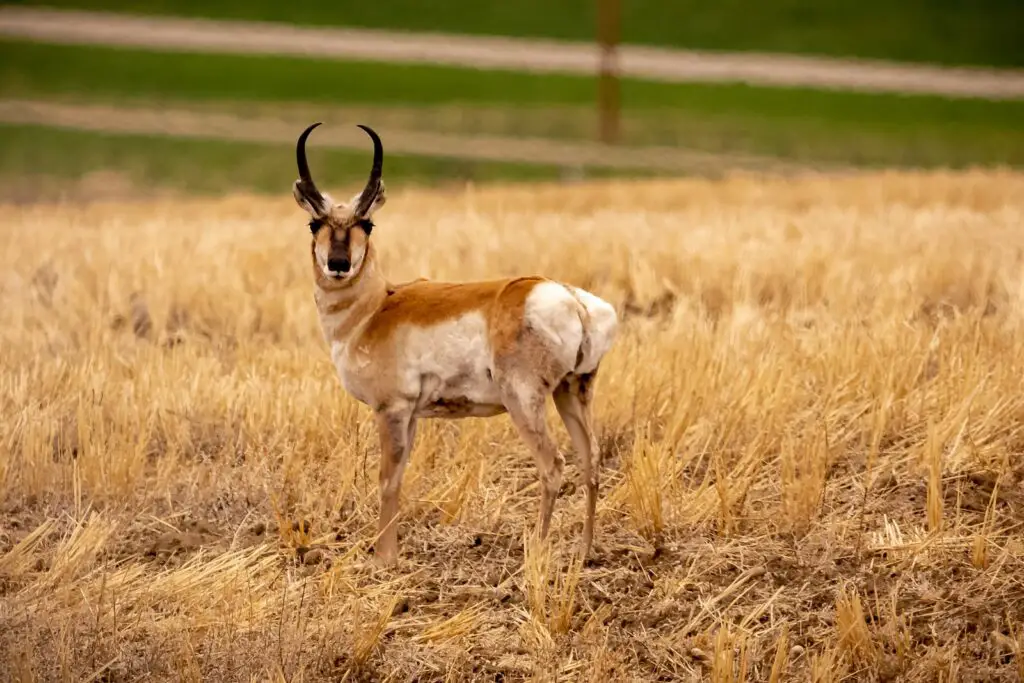
11. Pronghorns (Antilocapra Americana)
Pronghorns (Antilocapra americana) are sometimes considered a keystone species in certain North American grassland ecosystems, particularly those that closely resemble their historic habitat. Here’s how pronghorns can function as keystone species:
- Influence on Plant Communities: Pronghorns are herbivores that graze on grasses and other vegetation. Their feeding behavior can influence the composition and structure of plant communities. By consuming certain plant species more than others, they can indirectly affect the abundance and distribution of different plant types.
- Interaction with Predators: Pronghorns have historically interacted with now-extinct predators such as the American cheetah. This interaction influenced pronghorn behaviour, causing them to become extremely fast runners in order to avoid predation. The presence of pronghorns, as well as their adaptations to predator pressures, can have an impact on predator-prey dynamics, which can affect other species in the ecosystem.
- Landscaping Effect: Pronghorns are migratory animals that can travel long distances on their journeys. This movement can cause seeds to spread across different areas, aiding plant dispersal and potentially increasing plant diversity and colonisation in new areas.
- Ecosystem Stability: The grazing behaviour of pronghorns can help prevent the dominance of certain plant species. This can increase plant diversity by preventing one or a few species from overgrowing and monopolizing the landscape. A diverse plant community supports a wide range of other organisms, which contributes to the overall stability of the ecosystem.
While pronghorns may not fit the traditional keystone species model as dramatically as some other examples, their interactions with plants, predators, and the landscape can have cascading effects that influence the structure and dynamics of grassland ecosystems. However, it’s important to note that the keystone status of pronghorns might vary based on factors like ecosystem conditions, predator-prey dynamics, and human influences.
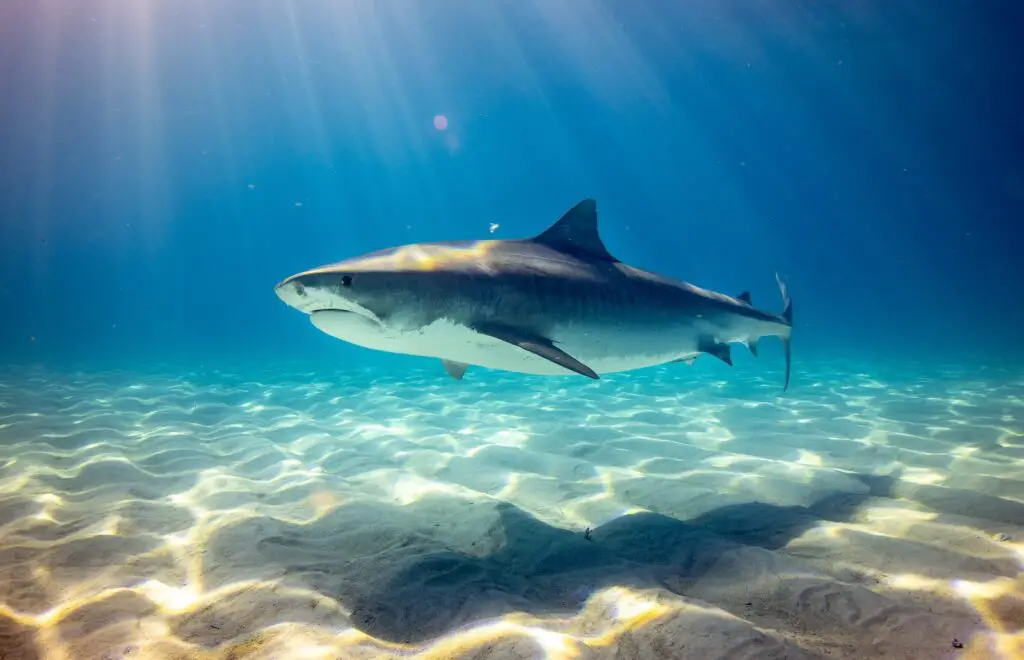
12. Sharks (Various species)
Sharks can be considered keystone species in some marine ecosystems, particularly in open ocean and reef environments. While the concept of sharks as keystone species is debated and might not fit the traditional keystone species definition in all cases, they do play important roles that can influence the balance and health of their ecosystems. Here’s how sharks can exhibit keystone-like characteristics:
- Top Predator Regulation: Sharks frequently occupy the top of the marine food chain, regulating the populations of species lower down the food chain. Sharks prevent overgrazing or dominance of certain prey species by keeping prey populations in check, thereby contributing to overall ecosystem balance.
- Species Diversity: Sharks, as apex predators, have complete control over the distribution and abundance of their prey species. This can result in a wide variety of species coexisting in an ecosystem. Sharks can prevent certain species from becoming overabundant and outcompeting others, thereby promoting biodiversity.
- Troop Down Control: The presence of sharks can affect the behaviour and distribution of lower trophic levels. For example, if sharks feed on mid-level predators, those predators will be less likely to overconsume their own prey, allowing smaller organism populations to thrive.
- Healthy Ecosystem Structure: Sharks contribute to the overall health and resilience of marine ecosystems. Because of their predatory role, they can prevent cascading effects throughout the food web, resulting in a more stable and natural ecosystem structure.
- Economic Value: Sharks help to support eco-tourism and local economies by attracting divers and tourists who want to see these apex predators. Shark tourism’s economic value can be used to incentivize conservation efforts to protect shark habitats and populations.
It’s important to note that the extent to which sharks act as keystone species can vary based on the specific ecosystem and the types of interactions they have with other species. Additionally, the classification of sharks as keystone species might not be universally accepted, as the concept is more commonly associated with species that have outsized impacts on ecosystems. Nonetheless, sharks’ ecological importance and their influence on marine ecosystems are widely recognized, and their conservation is crucial for maintaining the health of oceans worldwide.
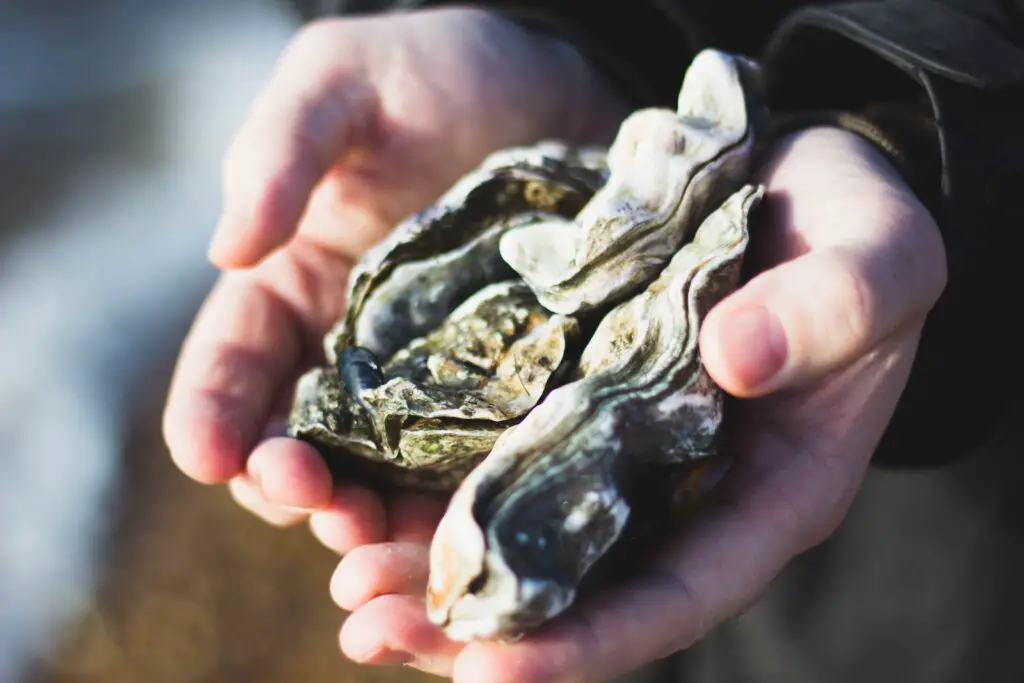
13. Oysters (Various species)
Oysters can indeed be considered a keystone species in some estuarine and coastal ecosystems due to the critical role they play in maintaining the structure and function of those ecosystems. Here’s how oysters qualify as a keystone species:
- Habitat Creation: When oysters attach to one another, they form complex three-dimensional structures known as oyster reefs. Numerous other species, including small fish, crabs, worms, and other invertebrates, use these reefs for habitat and protection. These species would lose a vital habitat without the oysters, threatening their survival and potentially causing changes in the entire ecosystem.
- Water Filtration and Water Quality: Oysters are filter feeders that feed on plankton and particles suspended in the water. They aid in the filtering of the water, removing excess nutrients and suspended matter. This filtration improves water clarity and quality, resulting in a healthier environment with fewer algae blooms and oxygen depletion.
- Erosion Control: Natural barriers, oyster reefs dampen the force of waves and currents. Their presence can aid in the protection of coastlines from erosion and the stabilisation of sediments. Without oyster reefs, coastal erosion could worsen, resulting in habitat loss and potential consequences for nearby communities.
- Biodiversity Support: Oyster reefs are home to a diverse range of species, including those that use them for shelter, foraging, and reproduction. The presence of oysters improves the ecosystem’s overall biodiversity, contributing to its resilience and functionality.
- Food Web Dynamics: Oysters are an important source of food for a variety of predators, including crabs and fish. Their abundance and distribution influence the abundance and distribution of these predator populations, which affects other species further down the food chain.
In summary, oysters influence multiple aspects of their ecosystem, and their presence has far-reaching effects on the health and balance of the ecosystem. If oysters were to be removed, it could lead to cascading effects throughout the food web and ecosystem dynamics, underscoring their significance as a keystone species in certain marine and estuarine environments.
